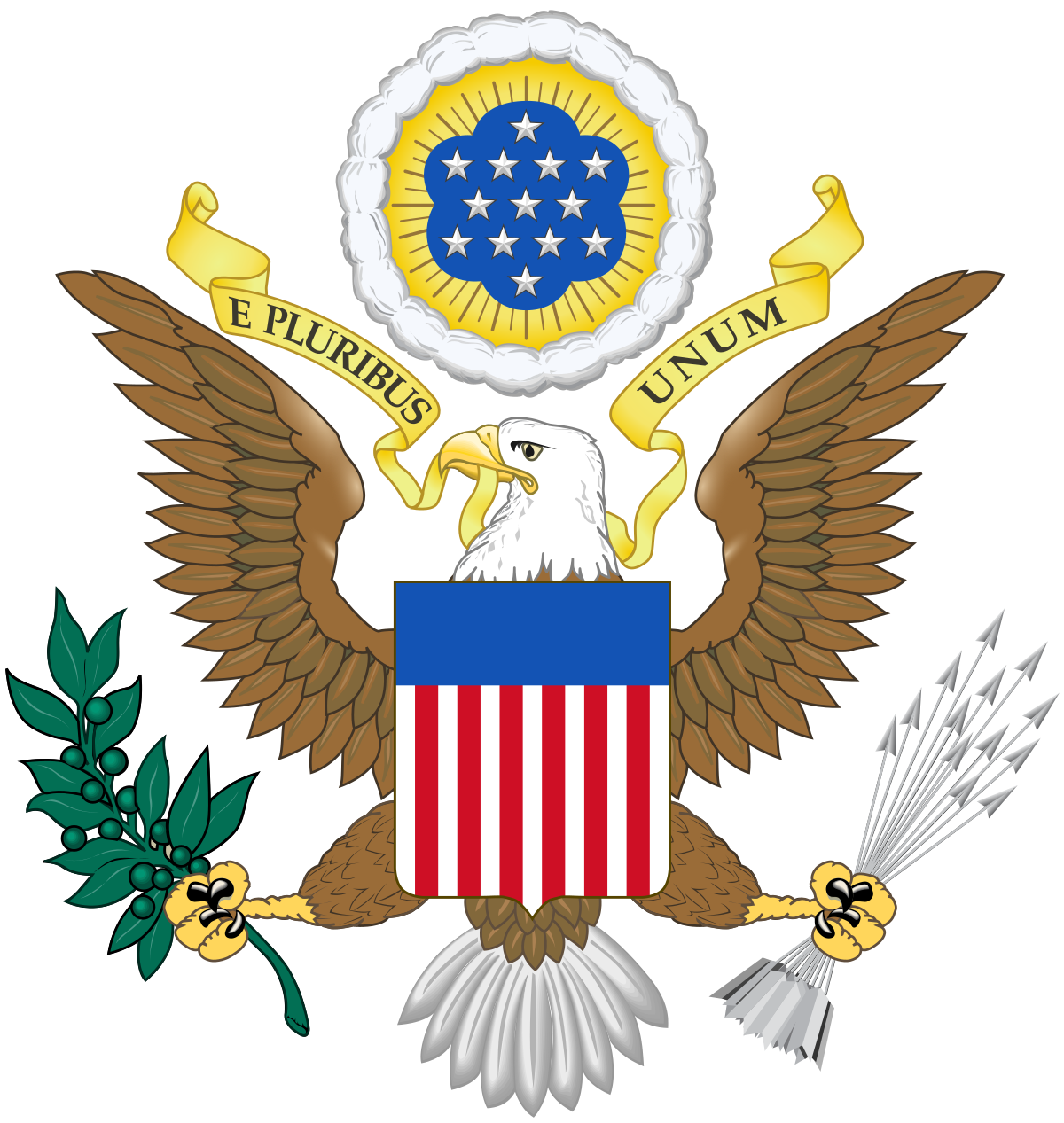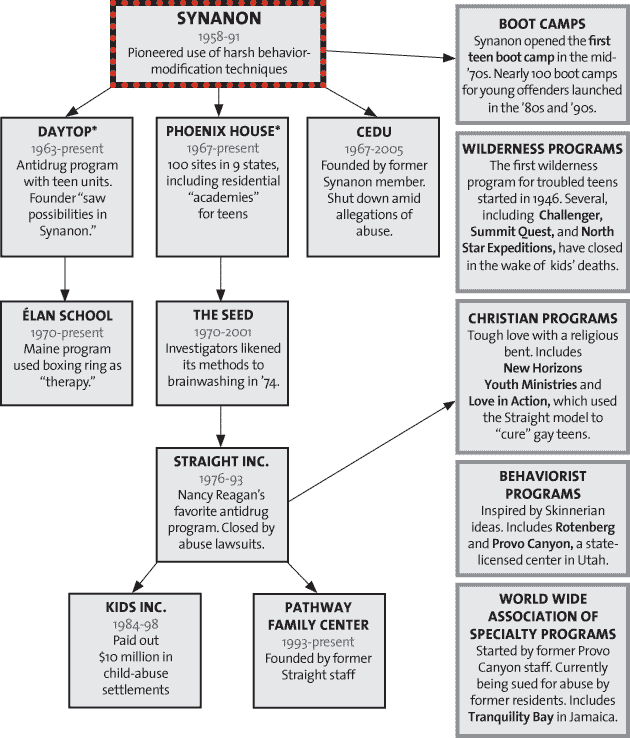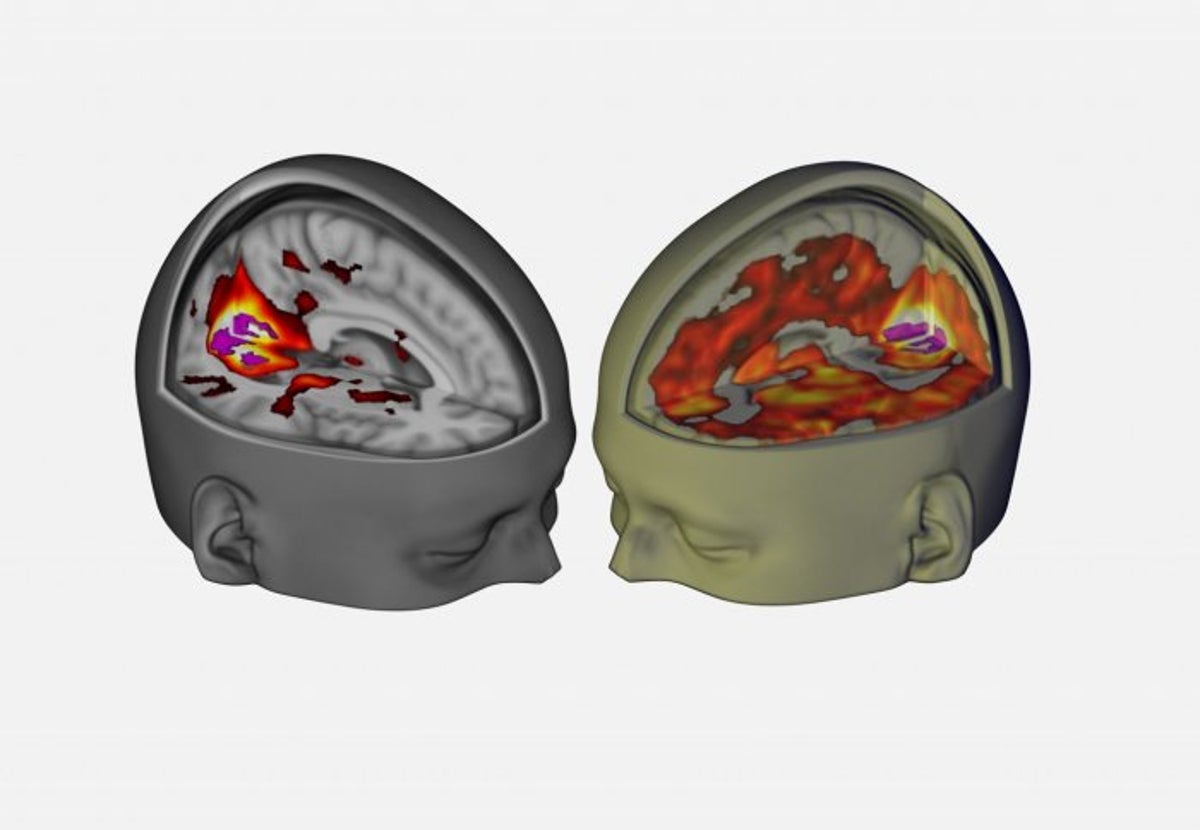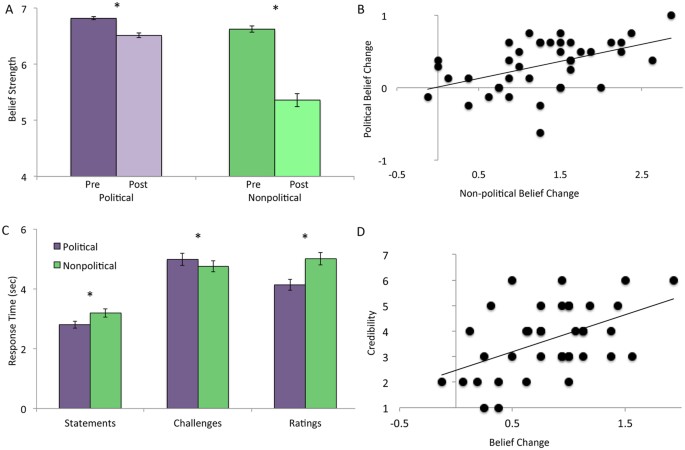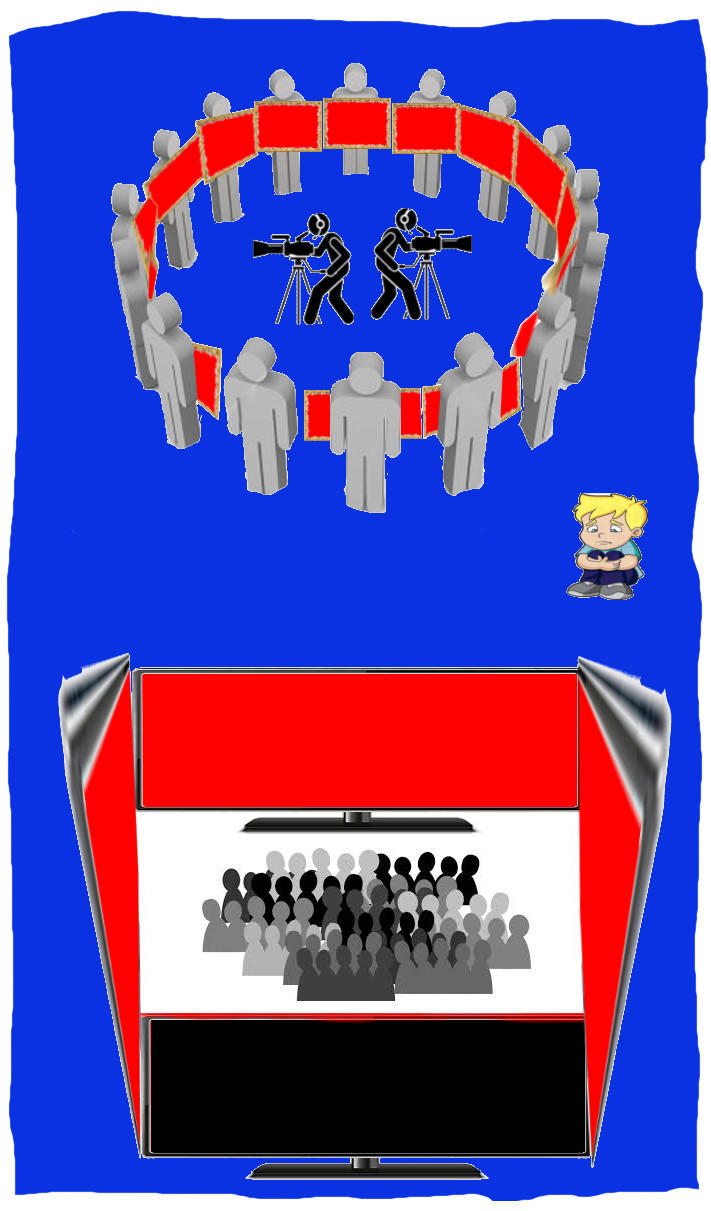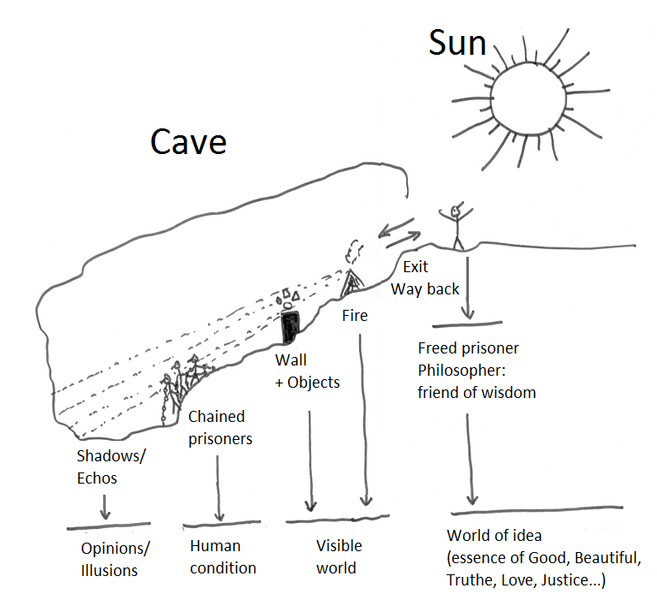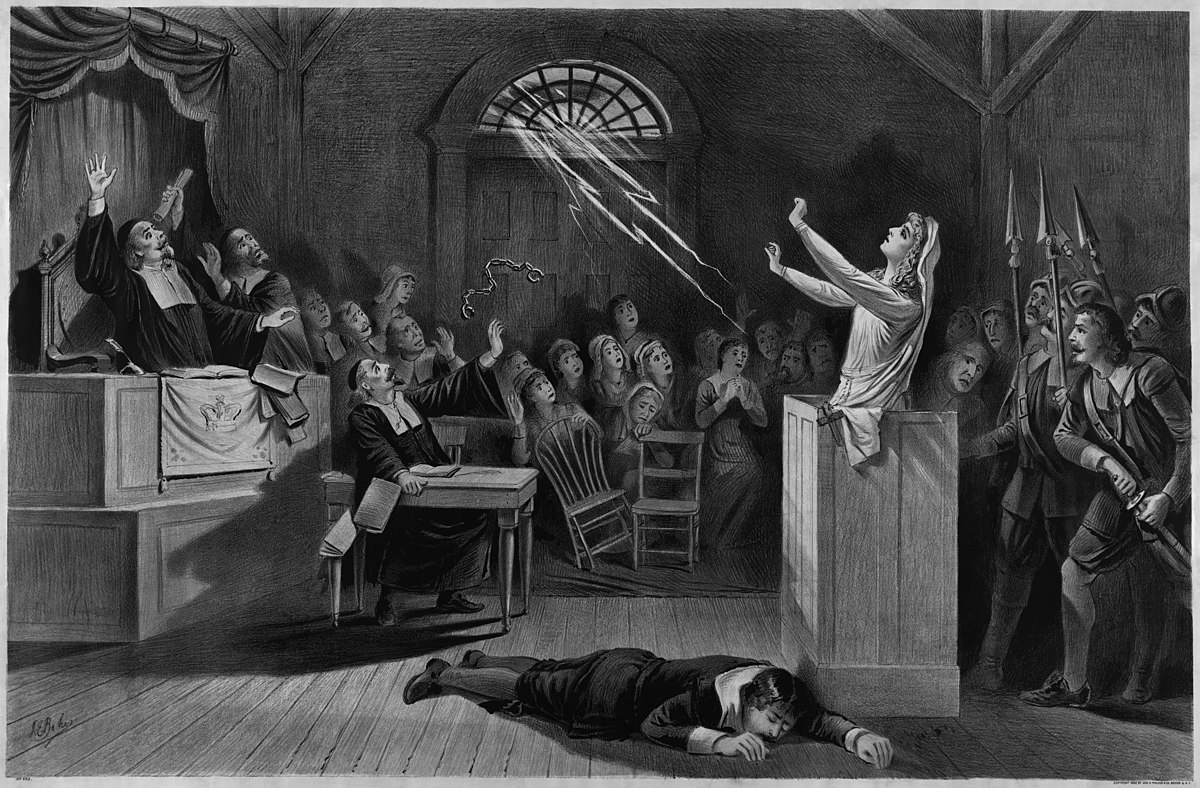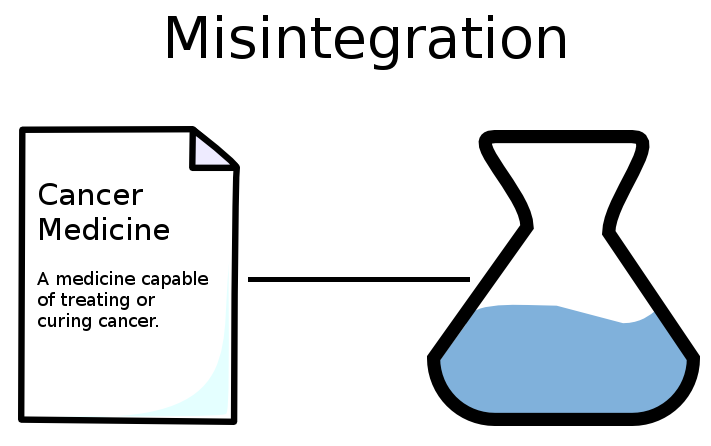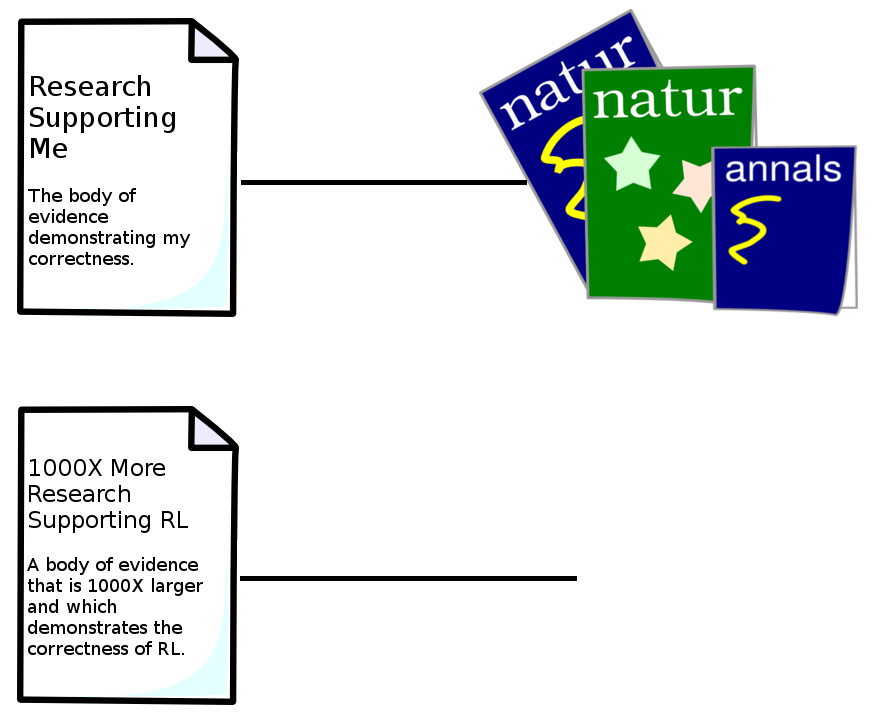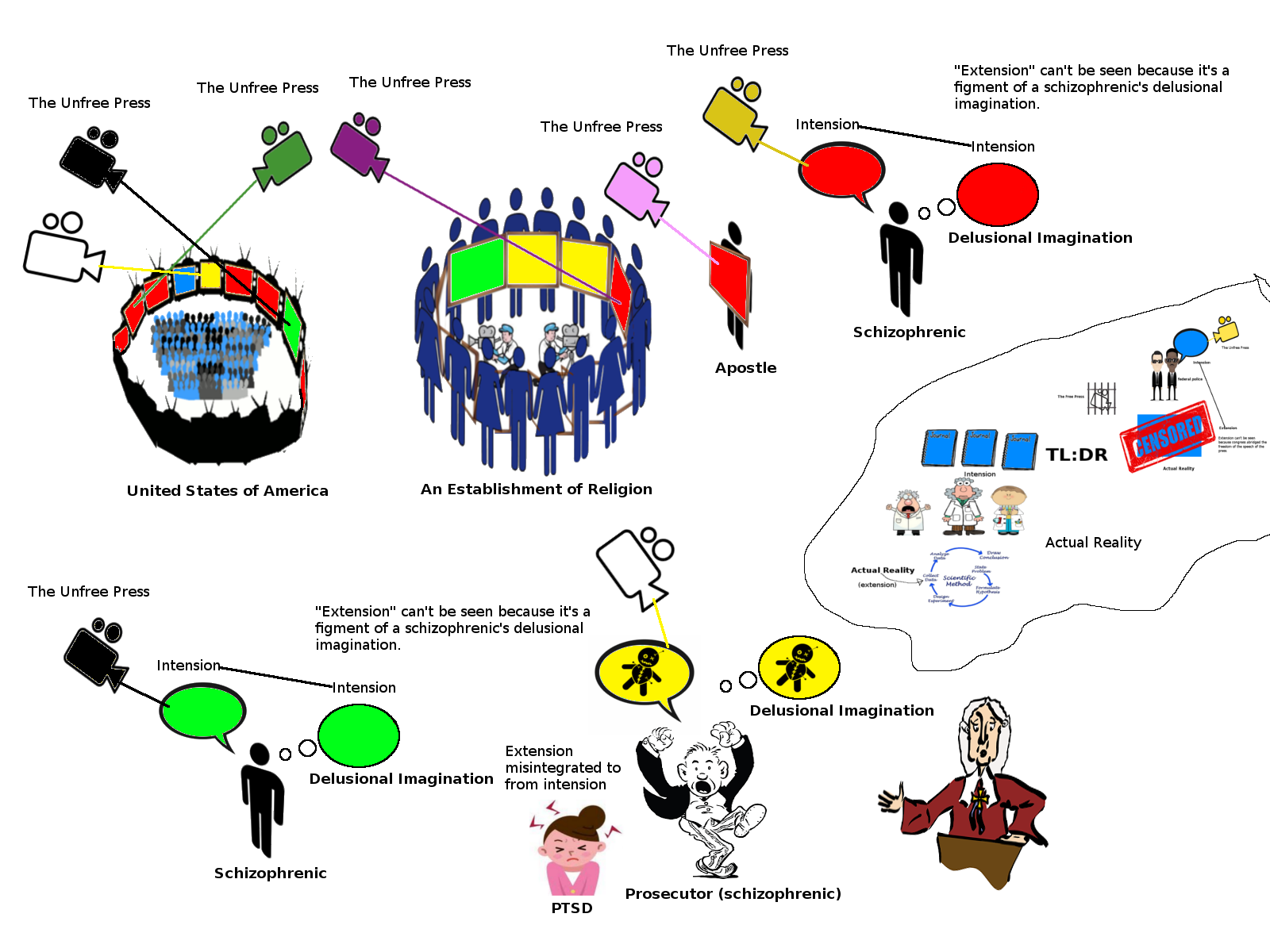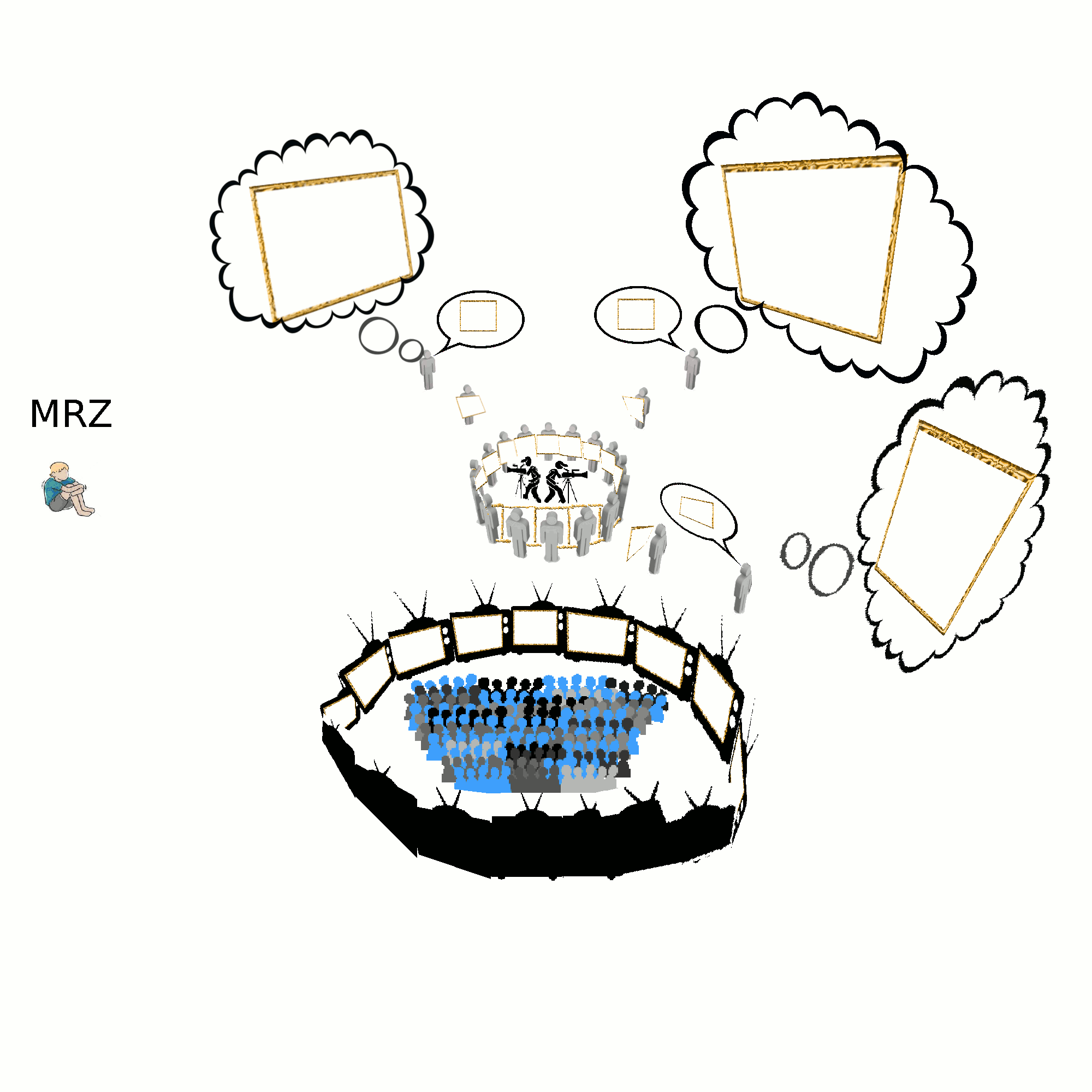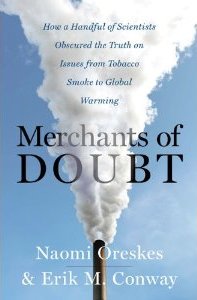Autism is a state of complete integration, whereas psychosis is a state of complete disintegration. To understand this, one must comprehend intension and extension.
I credit Philosopher Leonard Peikoff for his concepts of integration, disintegration, and misintegration, which I have, I believe, originally taught in terms of intension and extension, even as intension and extension are common philosophy terms that I am not sure who if anyone can be credited for. Peikoff introduced them in his book DIM Hypothesis, which I've not read, but I'm familiar with the concepts socially through those who have, and know the standard example of fully abstract art as a disintegration (intension sans extension), and referencing a, shall we say, false holy book (intension of "word of God" coupled with a book it doesn't belong with) being the standard example of misintegration. I believe I am the first to teach signalling theory in terms of intension and extension as well, including false signaling as a form of probably disintegration, but I digress from the actual topic.

Intension is something that denotes another; whereas extension is something that can be denoted (which is anything). The word "apple" is called verbal intension, however things are a bit tricky because it is actually in a meta-sense verbal intension representing the concept of intension itself. I say this because the picture of the apple, although I intend for you to conceive of it as extension, is actually just visual intension for an apple. If you were to reify the visual intension of the apple, which means conceive of it as being an actual apple, yet you didn't reify the verbal intension "apple," you could see that the verbal intension "apple" is descriptive of its physical extension, which is an apple. I can't actually demonstrate true extension such as an apple to you, for our sensory organs are too far separated for ostension to be made use of.
Abstract definition:
Problems in Philosophy and Physics Solved?

www.informationphilosopher.com
Intension and Extension describe two ways of indicating the meaning of a word or name. Intension assumes the word has an intrinsic meaning, perhaps simply by definition and thus "analytic." Extension is the set of objects in the world to which the word corresponds. There is a special kind of definition called "ostensive" which defines a word by pointing to those objects.
A concrete example:
If you are not skilled in colloquial astronomy, and I tell you that the morning star is the evening star, I have given you information—your knowledge has changed. If I tell you the morning star is the morning star, you might feel I was wasting your time. Yet in both cases I have told you the planet Venus was self-identical. There must be more to it than this. Naively, we might say the morning star and the evening star are the same in one way, and not the same in another. The two phrases, “morning star” and “evening star” may designate the same object, but they do not have the same meaning. Meanings, in this sense, are often called intensions, and things designated, extensions.
So, I think that should leave you pretty familiar with the concepts of intension and extension. In summary, intension is something that denotes something else, so oftentimes language, arts, but arguably even shadows can be thought of as intension if they are taken as "denoting" that which casts them. Intension is very important in signalling theory of biology as well, and naturally evolves in animals in the form of their signaling.

en.wikipedia.org

That shows Batesian and Müllerian mimicry, with the Batesian variant being the parasitic form. It is parasitic because the coloring is aposematic, which means indicative of an ability to defend oneself, which is because of its being associated with bees and wasps, which have the ability to sting, whereas the hoverfly has the same coloring but it isn't able to sting. So, aposematism partially works by teaching predators (and perhaps others) to associate a signal with a consequence. So, if you run into a bee and get stung you learn to associate its distinct signals with stinging such that you will avoid messing with bees in the future, and this collectively allows bees to teach you to not mess with them which is good for them as an entire species. So, the Müllerian mimicry is when wasps and bees develop similar honest warning signals in the form of the same sort of distinctive, sticking out, aposematic coloring, such that running into a bee will teach you to avoid messing with wasps or bees, and running into a wasp the same as well will teach you not to mess with wasps or bees.
So that is mutual mimicry. However, running into a wasp or bee also teaches you not to mess with a hoverfly, even though it can't sting you, and it gains a parasitic advantage from this. It is parasitic because if you run into a hoverfly before having run into a wasp or a bee, you will think you can eat things of that coloring and will attack wasps and bees before learning that some things with that coloring can sting, and although they can defend themselves with their stingers, it is oftentimes quite costly for them to have a violent encounter needing to defend themselves even if they live through it, and many of them will die from such encounters but gain a benefit for their species by associating their aposematic coloring with stinging so that things may kill numerous of them but will be taught to avoid them so rapidly that most things will not attack them unless they are naive, and naive things get stung and stop attacking them so quickly that the need for violent confrontation is greatly reduced over the species even as some individuals experience it in the teaching process.
So, the aposematic coloring is actually a form of evolved intension that denotes the extension of a stinger, even though the Hoverfly doesn't have one (more on this later).

So, integration is when you have intension that is correctly associated with its extension. What exactly that means can be hard to qualify, but few will argue that it is more appropriate to associate "dog" with one extension than another. Even as the most accurate intension that could be associated with a given dog may even be a philosophical question to some extent. I mean, the sequencing of a genome is intension that can be associated with a specific dog, and in a sense it could be imagined as being more detailed than the intension "dog," but nevertheless associating the intension "lawn mower" with the same extension would clearly be bizarre, so we can all see an intension can be more or less associated with its extension and that it can be hard to say what a proper degree of integration between an intension and extension is, or how to measure such a thing, but nevertheless integration is a proper association between intension and extension being formed (as by ostension --- which is to say pointing --- or other such things).
There is actually a level of integration even one more so than this correct coupling of intension to extension: The lack of intension --- having an awareness of only extension (i.e., being without the cognitive capacity for comprehension of denotation).
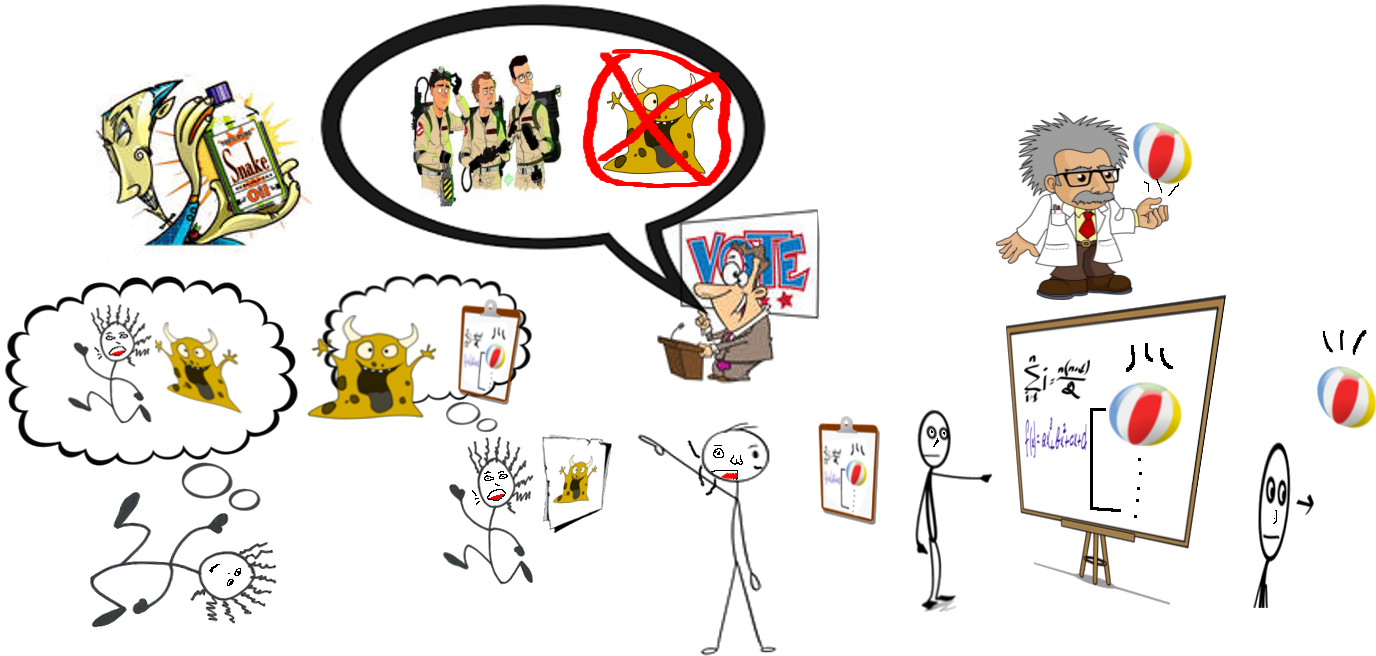
And that is the far right character of this segment of the autism-psychosis spectrum, which is a profound catatonic autism. If you go even further to the right you end up having life-threatening seizures; however, I don't have that included on this graphic, and it starts deviating more so into the realm of neuroscience/neurology/pharmacology/medicine than the more philosophical/psychological/psychiatric aspect that is captured more so everywhere except the far ends of the spectrum in both directions, which actually have a very similar presentation. There is very advanced neuroscience regarding why this is, which I once managed to grasp after working on reading it in a source, but which is beyond me to explain to you, that explains why you end up at nearly the same state, of having violent seizures, at either far extreme of the spectrum, both of which are profound forms of inverted catatonia progressing into life-threatening forms with seizures. It has to do with the delicate balance between glutamate and GABA, and is related to the paradox of why NMDAR antagonists can be effective for treating catatonia despite the anti-NMDAR-encephalitis being psychotomimetic and oftentimes presenting with catatonia.
We report anti-N-methyl--aspartate (NMDA) receptor encephalitis in two patients with autism and intellectual disability presenting with neuropsychiatric symptoms of catatonia and neuroleptic malignant syndrome. Case reports such as these help raise awareness ...

www.ncbi.nlm.nih.gov
Catatonia resistant to benzodiazepine and electroconvulsive therapy has been treated with NMDA-antagonists (amantadine and memantine).20 Theoretically, however, these may exacerbate anti-NMDA-receptor encephalitis.
The seeming paradox of catatonia being, in some cases, successfully treated with NMDAR antagonists, even as anti-NMDAR encephalitis can cause catatonia and would seemingly be exacerbated by NMDA antagonists, has a nice neuroscience explanation for it that I've comprehended in my mind once after spending like an hour or so trying to figure out the advanced sequences explained in a paper I was just on the threshold of being able to comprehend, and it is the same underlying reason why the extreme of autism and the extreme of schizophrenia both have catatonia progressing into seizures despite being essentially neurologically inverted states; however, I cannot recall the rather advanced neuroscience enough to tell it to you, and I've unfortunately had trouble finding the good source that explained it so well again, but recall it was a letter to the editor speculating a mechanism that I looked over for an hour or so and saw as being sensible but beyond the skill of neuroscience I usually think of. To do with a delicate balance between glutamate and GABA, with autism being hyper glutamate oriented,
The present study suggests that an abnormality in glutamatergic neurotransmission may play a role in the pathophysiology of autism.

www.ncbi.nlm.nih.gov
RESULTS:
Serum levels (mean = 89.2 microM, S.D. = 21.5) of glutamate in the patients with autism were significantly (t = -4.48, df = 35, p < 0.001) higher than those (mean = 61.1 microM, S.D. = 16.5) of normal controls.
and schizophrenia being theorized today as modeled by hypofunctional NMDAR, which is why anti-NMDAR encephalitis, an autoimmune disease that attacks NMDA receptors, is psychotomimetic, which means essentially has a presentation of psychosis (oftentimes implicitly schizophrenia, but not necessarily).
Several decades of research attempting to explain schizophrenia in terms of the dopamine hyperactivity hypothesis have produced disappointing results.…

www.sciencedirect.com
Several decades of research attempting to explain schizophrenia in terms of the dopamine hyperactivity hypothesis have produced disappointing results. A new hypothesis focusing on hypofunction of the NMDA glutamate transmitter system is emerging as a potentially more promising concept. In this article, we present a version of the NMDA receptor hypofunction hypothesis that has evolved from our recent studies pertaining to the neurotoxic and psychotomimetic effects of PCP and related NMDA antagonist drugs. In this article, we examine this hypothesis in terms of its strengths and weaknesses, its therapeutic implications and ways in which it can be further tested.
However, this is just a long aside because we are not focusing on this more medical perspective of the extremes, but only on those areas that are on the graphic. So, the profoundly catatonic (but not progressing into life threatening seizures) autistic person is a very low functioning autistic. With language and visual comprehensions such people are by definition essentially profoundly retarded, for they have a near inability or perhaps even an inability to comprehend the concept of intension. Without any intension that is verbal or visual, such a person hasn't really the ability to dissociate at all from existence. Autism can actually, in an uncommon but correct sense of the word, be thought of as a hyper-associative disorder, with schizophrenia being a hyper dissociative disorder.
However, the previous paragraph needs to be taken with the understanding that associative thinking is actually a process of dissociating from linear thought into a randomization or topic switching mechanism that allows for branching of thought with a new association into linear thought regarding the new branch. So, psychosis is actually highly associative in thought like this, as it has short lived sequences of linear thought with rapid branching, into incoherence at the most extreme end, of word salads and the other such things, with the most extreme being such rapid switching as to be stringing together nonsensical word sequences because of a lack of linear thinking abilities with intact switching resulting in an incoherent word spam. But even with much less severe expressions, rapid branching and less linearity is a quintessential trait of more psychotic thinking patterns, which can be useful, but with autism being more the trend toward the opposite direction, of getting stuck on a line of thought and linearly extending it out forever without appropriately switching to a new topic even for prolonged segments of discourse. Probably similar to a good deal of my writing ^_^.
So, psychosis is actually associative in thinking, with autism contrasting with this associative by being more linear oriented, so longer periods of linear thought instead of shorter bursts of it with more rapid associative branching. However, in the sense of association with extension, profound autism is highly associative, for it has a lack of comprehension of denotation; consequently, everything is perceived as extension, even intension as the extension that it ultimately is, rather than the abstract cultural significance of it (including even the meaning of it, or the use of it as a denotative symbol even).
However, there are many less profoundly autistic people, including a range of people with more severe, or moderate but low functioning forms of autism, who are typically the people thought of as having lower functioning autism (most people probably have less awareness of the more catatonic forms of autism, especially when they progress into being essentially life-threatening epileptic conditions, as this is not what most people would think of with autism). So, these low functioning autistic people, I believe always, have a discrepancy between their ability to make use of verbal or visual intension that favors highly literal visual intension. So, the example of the picture of an apple is more literal and visual intension than the comparatively far more abstract "apple." So, that is a form of low functioning autistic literal interpretation ability, of being able to understand that a picture of an apple means an apple, and to be able to make choices between things like asking for an apple or pear by being able to point to it in a picture book, even as being otherwise unable to make use of intension. So, there lower functioning autistic people oftentimes can still make very minimal use of verbal intension, but have enough visual intension abilities that they have some communication abilities, even as they are with severe degrees of impairment still in some cases, they at least have a concept of denotation and intension, so long as it is highly visually literal.
So, the previous paragraph actually covers a severity degree of autism that isn't on my graph either, but which should be placed between the catatonic autistic and the high functioning autistic, and which is called low functioning autism, itself having differing degrees of severity based on overall functioning and skill at using highly literal visual intension, bit being essentially a likewise clustering grade of the condition, historically probably called Kanner Autism; however, our models of autism and the like have advanced a ton from the (I believe seminal) model of autism as Kanner autism (which still has a lot of validity to it, and characterized low functioning autistic people I believe, Leo Kanner's work).
So, there are the extreme ends of psychosis and autism with life-threatening seizures not displayed on my graphic, and there are it's also missing low functioning autism between catatonic autism and high functioning autism, but it's as I just described: with some highly literal visual intension abilities / some intact concept of denotation involving very literal visual representations.
And then we get to the high functioning autistic person, who, from the right, is the second person (pointing at board). So, high functioning autistic people tend to have highly integrated intension of one sort and impaired intension processing abilities of the other. For example, I have gifted ability to comprehend and produce verbal intension, but in regard specifically to my long term visual memory, which is to say my long term visual intension system, I have severe impairment in my ability to hold intension traces (i.e., severely impaired long term visual memory). So, there are two primary types of high functioning autism, which historically were called Aspergers and HFA (poorly named as it stands for High Functioning Autism in a genus-species relationship in which its genus is High Functioning Autism, of which Aspergers is a sub-type despite not being HFA. Sorry to confuse you if I did, lol). In any case, Aspergers is traditionally the form with superior abilities in relation to the domains of verbal intension, with notable deficits in the domain of visual intension. And HFA is usually the opposite, which makes it more like a variant of the low functioning Kanner autism but skewed much more toward average and even above average intelligence; however, people with HFA are still usually toward the slower end of average overall (not invariably). Aspergers, which is no longer recognized by everyone (but just another historical model with still a lot of validity to it, just like Kanner autism is) is a particularly unique expression of autism, because it inverts the discrepancy pattern seen in both HFA and low functioning autism, which is to say that it have superior verbal with inferior visual domains. It's also the only form of autism that is associated with being somewhat more intellectually competent than neurotypicals on average, but usually only by like a 10 point advantage in verbal IQ I believe (may be wrong need to double check), and a 1 point disadvantage in visual IQ. This is the finding of a meta analysis anyway, but it is controversial somewhat too, because the overlap of NVLD with Aspergers would predict a greater reduction to PIQ than 1 point,
There is clearly a great deal of overlap between Aspergers Disorder (AD) and Nonverbal Learning Disabilities (NVLD), so much so that it is possible that

www.aane.org
There is clearly a great deal of overlap between Aspergers Disorder (AD) and Nonverbal Learning Disabilities (NVLD), so much so that it is possible that the symptoms of each describe the same group of children from different perspectives—AD from either a psychiatric/behavioral perspective, and NVLD/neuropsychological perspective. The specific conventions of these diagnoses may lead to a somewhat different group of children meeting diagnostic criteria, but it is not clear that this reflects something “true” in nature. That is, it may only be convention that separates these two groups.
Still, Aspies are the most intelligent autistics (probably modestly more so than neurotypicals as well, on average), which is a unique feature of it as an autism that is typically somewhat intellectually sharp, with even HFA oftentimes (but not always, just on average) being more limiting in terms of intellectual aptitude, but just notably into the lower end of the average range overall. Aspies with NVLD, such as I am (having dual diagnosis, from two professional evaluations across two fields), have much more discrepant sub-scores than this meta-analysis suggests. So, things are always a little fuzzy trying to comprehend so much from so many evolving areas, and there is a bit of something here I need to clarify, but you get the general idea.
A meta-analysis was performed to examine differences in IQ profiles between individuals with Asperger’s disorder (AspD) and high-functioning autism (HFA). Fifty-two studies were included for this study. The results showed that (a) individuals with AspD had significantly higher full-scale IQ...

link.springer.com
and for a long time NVLD aspies were the canonical aspies (same group, different children), so I found that meta-analysis a little bit surprising seeing as NVLD is clearly with visual and PIQ reduction of more than 1 point of average.
I was diagnosed with a Non-Verbal Learning Disability when I was in my junior year of high school. Learning disabilities weren’t even on anyone’s radar, not my parents, not my...

nvld.org
It’s Like Being Blind, Except I Can See, by Michelle Thomas
I was diagnosed with a Non-Verbal Learning Disability when I was in my junior year of high school. Learning disabilities weren’t even on anyone’s radar, not my parents, not my teachers… not mine for sure. I was diagnosed with a chromosome disorder called Turner Syndrome and part of the followup testing for that was NVLD testing since it’s very common with those who have Turner Syndrome.
Suddenly everything made sense when we got confirmation of the learning disability. It made sense why I struggled so much in geometry and chemistry. It made sense why I had so many awkward social interactions as a child. Why I always wanted to draw but could never master the hand eye coordination to do so no matter how much I practiced. Why I talked to myself out loud when performing a task. Why it felt like I was blind despite having vision.
However, my GIQ is still 110, and I have subscores into the 130s at least, as well as various atypical talents of modest notability, including my thinking style in general being in an atypical form of progression that is more sorting and matching oriented than the neurotypical way of thinking, and a modest expression of hyperlexia when taken to mean an autistic special competency with reading comprehension, literacy, vocabulary, and the like, but only relatively mildly so, and also being with an accompanying visuospatial disorder as is essentially by definition the case with NVLD. I read and used language about 2.5 grades ahead of my level though, but had severe difficulties with finding my way around school and the like. So, that is an example of having intact and even superior verbal intension processing abilities, but with less visual intension skills in a certain area of long term visual memory pertinent matters.

en.wikipedia.org
Type 2: Hyperlexia marked by an accompanying visual-spatial learning disorder.
In any case, a lot of very rational, wise, objective, neutral, integrated, and even quite gifted people are more so high functioning autistic, and they have association with sciences and the like, and although there are geniuses, high functioning autistic people, and high functioning autistic people who are geniuses, high functioning autistic people do have numerous of the traits of geniuses superficially even when they are not themselves geniuses. This is because of their ability to rote memorize material of a higher level than they can comprehend and to replay it in a parroting fashion, or to develop very deep knowledge in an area indicative of a comprehensive understanding that is belied by their ultra-narrow focus not having including the comprehensive broad understanding a genius with a similar specialized understanding would also have. So, it is "better" to be a genius or a high functioning autistic genius, but high functioning autistic people have some partially real but primarily superficial similarities to geniuses as well, and can be hard to distinguish from them if you aren't trained or given some time to evaluate the person. Still, such people are not with more than borderline general impairments, and can be average or anything less than genius (if they are genius then they are high functioning autistic geniuses) which includes very gifted by not genius people, who then have still more autistic ways of thought and are not geniuses but who still are not as superficial in their appearance of genius because of honestly approximating it instead of superficially doing so as the less gifted end that is still high functioning does increasingly more so until you get to the low functioning people more likely to catalog things like train schedules or something.
I am not an autistic genius; however, I am very gifted with some sorts of intellectual problem, and in general am intellectually toward the higher end of average, but with massively discrepanct sub-scores characteristic of the NVLD variant of Aspergers: having severe impairments and very gifted competencies simultaneously.
So, the high functioning autistic people are highly integrated in one form of intension, but have even egregious impairments regarding the ability to use other forms of intension, so long as they are not by the intelligence tests said to have anything worse than borderline mental impairment on average. But, especially among aspies, and sometimes among those with HFA, are some of the most bright people in the sciences and the like, and also the people who are very rational, and literal minded, but still gifted, and not likely to believe in pseudoscience and the like, or to be religious to much if any extent (i.e., perhaps something like believing in Einstein's God / Spinoza's God / Temple of the Supreme Being; however, oftentimes also atheists and agnostics, and nearly never much more religious than the examples provided, other than perhaps some experimentation and then disinterest because of lack of belief).

blogs.scientificamerican.com
In a second experiment, Heywood and Bering compared 27 people with Asperger’s with 34 neurotypical people who are atheists. The atheists, as expected, often invoked anti-teleological responses such as “there is no reason why; things just happen.” The people with Asperger’s were significantly less likely to offer such anti-teleological explanations than the atheists, indicating they were not engaged in teleological thinking at all. (The atheists, in contrast, revealed themselves to be reasoning teleologically, but then they rejected those thoughts.)
Compared to healthy elderly adults, Alzheimer’s patients were more likely to judge unwarranted teleological explanations as accept-able. They were also more likely to judge those explanations as preferable to mechanistic ones. These findings suggest that teleology, like animism, is a deep-seated form of intuition that can be suppressed by a more scientific worldview but cannot be eradicated altogether.
Autism: Deficits in folk psychology exist alongside superiority in folk physics.
in children with Asperger’s disorder. A test of fluid intelligence, the Raven’s Standard Progressive Matrices Test, was administered to 17 children with Asperger’s disorder and 17 age-, gender-, and FIQ-matched normal children. The results showed that children with Asperger’s disorder outperformed on the test of fluid reasoning than typically developing children. We suggest that individuals with Asperger’s disorder have higher fluid reasoning ability than normal individuals, highlighting superior fluid intelligence.
People with autism have a greater than normal capacity for processing information even from rapid presentations and are better able to detect information defined as "critical," according to a new study. The research may help explain the apparently higher than average prevalence in the IT...
www.sciencedaily.com
People with autism have a greater than normal capacity for processing information even from rapid presentations and are better able to detect information defined as "critical," according to a new study.

onlinelibrary.wiley.com
Why Do Autistic Individuals Show Superior Performance on the Block Design Task?
They have a tendency to be more mind blind because of their close integration to matter.
"Does Poor Understanding of Physical World Predict Religious and Paranormal Beliefs?"
The ability to distinguish mental from physical seems to be impaired both among ASD individuals and supernatural believers, although its manifestation is reversed. Because findings from hyper-mentalistic and hyper-mechanistic cognition, as two opposite phenotypes, can help each other in the search for their underlying mechanisms, one promising approach for future studies might be to integrate research on this newly found matter-blindness to research on mind-blindness.
More schizophrenic people have the opposite, of being matter blind but not mind blind, with the more severe schizophrenias that start becoming catatonic being essentially like taking ketamine or being in deep REM sleep. I mean, you lose contact with the external world because of how deep you are into your DMN.
The default mode network is a state of brain activation, where the individual is not attending to any external cues in the environment, but certain regions are still activated. It has been found that the default mode network regions of the brain are negatively correlated with regions that are activated during tasks and stimuli presentation, known as task-positive regions. Thus, it was found that the default mode network and task-positive region could not be co-active because they appeared oppositely activated. However, previous studies show that there is a shared region between both networks: the dorsolateral prefrontal cortex (DLPFC).
activity in the DMN is strongly associated with mental imagery that is not directly tied to current perception (“stimulus-independent thought”), which is also a central feature of dreams.
Conclusions
In conclusion, recent EEG and neuroimaging research shows that regions that have been related to psychotic insight deficits are highly activated in lucid compared to non-lucid dreaming. This fact empirically substantiates the analogy between the metacognitive impairments in psychosis and non-lucid dreaming. While research into lucid dreaming is currently limited by the rarity of the phenomenon, metacognitive training or other lucid dreaming induction methods might lead to new therapeutic approaches by improving insight in psychosis. Lucid dreaming therefore transforms the dreaming psychosis model from an interesting idea with a long history into a testable scientific hypothesis and a promising new therapeutic approach.
To summarize, the empirical findings reviewed here constitute neurobiological evidence of the theoretical idea that dreaming indeed might serve as a model of psychosis: cortical, in particular prefrontal, medial parietal and inferior temporal regions that are linked to insight problems in psychosis show striking overlap with brain regions in which activation increases during dreaming are associated with the gain of insight into the current state of mind (see Fig. 3). From a network point of view, schizophrenia patients show disconnectivity within the frontoparietal network and stronger connectivity within the default mode network [79,80], with the exception of default mode network regions implicated in self-referential processing, within which patients with poor insight show decreased connectivity [56].
Prefrontal and pa-rietal regions are involved in most higher cognitive processes like intelligence or working memory [43], in particular the dorsolateral prefrontal cortex has been associated with metacognitive evalua-tion[44,45]. The precuneus has been proposed to be the pivotal region involved in self-referential processing [46]. The fronto-parietal activation pattern observed during lucid REM sleep therefore nicely mirrors the reinstantiation of reflective capabilities experienced during lucid dreaming. In contrast to the default mode network-like activation patterns of normal REM sleep [41] , brain regions activated during lucid dreaming comprise substantial parts of the frontoparietal control network [35]. This network has been postulated to integrate information coming from both the default mode and attention networks by switching between competing internally and externally directed processes[47]. Due to this role as a kind of meta-network, the frontoparietal control network might be seen as an ideal candidate subserving processes of metacogni-tion like dream lucidity[48].
People in a state of psychotic decompensation may be viewed as experiencing a complete breakdown of the barriers that separate waking from dream states. Not surprisingly, paranoid patients may dream about their delusions and their dreams may have the same content as their delusional material. Accordingly, they commonly dream about being persecuted by their abusers, although the dream may include many bizarre components not present in the waking delusion. Furthermore, many schizophrenics experience an ongoing eruption into conscious awareness of primitive unconscious material, with the result that they walk around in a state in which they are flooded with their primitive impulses. Their waking lives are like ongoing nightmares. Differentiation between dreams and reality become very blurred. Not surprisingly, sex-abuse delusional material is usually present in this primitive outflow into both dreams and the waking state.

www.bmj.com
Schizophrenia is waking reality processed through the dreaming brain
In psychopathology, dissociation happens when thoughts, feelings, and experiences of our consciousness and memory do not collaborate well with each other. This module provides an overview of dissociative disorders, including the definitions of dissociation, its origins and competing theories...

nobaproject.com
I believe the following is not actually referring to schizophrenia/psychosis, but it essentially ought to be as there is no clearer case of a dissociative disorder than schizophrenia. So, a lot of people will tell you I made a mistake by including this link in my discussion --- because schizophrenia isn't technically classified as a dissociative disorder usually. However, my expert opinion is that it is the epitome of a dissociative disorder, so just realize that a lot of people don't necessarily think of it as being one because it isn't officially listed as one usually (there is a fantastic case for it being one --- I mean NMDAR antagonists are
dissociative aneshtetics, and they are psychomimetic because they mimic hypofunctional NMDAR).
Think about the last time you were daydreaming. Perhaps it was while you were driving or attending class. Some portion of your attention was on the activity at hand, but most of your conscious mind was wrapped up in fantasy. Now imagine that you could not control your daydreams. What if they intruded your waking consciousness unannounced, causing you to lose track of reality or experience the loss of time. Imagine how difficult it would be for you. This is similar to what people who suffer from dissociative disorders may experience. Of the many disorders listed in the Diagnostic and Statistical Manual of Mental Disorders (DSM-5) (American Psychiatric Association, 2013), dissociative disorders rank as among the most puzzling and controversial. Dissociative disorders encompass an array of symptoms ranging from memory loss (amnesia) for autobiographical events, to changes in identity and the experience of everyday reality (American Psychiatric Association, 2013).
So, that brings you from the far left toward to the middle, with the more catatonic schizophrenia being like a complete dissociation from reality into a REM like state (the opposite of the autism catatonia of being locked into extension and unable to dissociate even into the intension of REM to much of an extent at all; I wonder to myself though if any profoundly catatonic autists lack REM even, but I don't know it possible to surive without some of it, so even the most catatonic of autists may have some ability for denotation, or the ones not having such may be the ones who die eventually from seizure that is life-threatening by their degree of catatonic extremity.
Children with autism spend less time in the rapid eye movement stage of sleep than do either controls or those with developmental delays, according to a November report in the Archives of Pediatrics &

www.spectrumnews.org
Children with autism spend less time in the rapid eye movement (REM) stage of sleep compared with controls and those with developmental delays, according to a November report in the Archives of Pediatrics & Adolescent Medicine1.
To compare objective polysomnographic parameters between three cohorts: children with autism, with typical development, and with developmental delay without autism.Overnight polysomnographic recordings were scored for sleep architecture according to American ...

www.ncbi.nlm.nih.gov
There were no differences between typical v developmental delay groups. Autism v typical revealed shorter TST (p = .004), greater SWS percentage (p=.001), and much smaller REM percentage, 14.5 v 22.6 (p<.001). Autism v developmental delay revealed shorter TST (p=.001), greater stage 1 percentage (p= <.001), greater SWS percentage (p = <.001) and much less REM percentage, 14.5 v 25 (p= <.001).
when you get to the higher functioning schizophrenic people, they are not isolated away from extension in REM, but they are essentially in a daydreaming state very commonly, and have trouble not drifting into such a state, and have a sort of disconnected phenomenology because of essentially dreaming the "awakeness" that most others would more so be directly perceiving. It causes a perception of the waking world through the dreaming mind more so, as one of the citations I used said. So, that is the basis from which you can have a lot of weird shit, when you can't tell your daydream state from the real state any longer, or drift into and out of being able to do so. I mean when you dream is when you see shit that isn't really there, and sometimes maybe hear things that aren't there or have weird thoughts that have a sort of cognitive anosognosia to them (except in lucid dreaming, which causes that to go away because of activating the TPN areas a bit more so than normal).
And then the middle character is a neurotypical, which manifests an either autism or schizophrenia like presentation based on whether environmental stimuli are socioculturally pertinent.
Prior work has established that analytic thinking is associated with disbelief in God, whereas religious and spiritual beliefs have been positively linked to social and emotional cognition. However, social and emotional cognition can be subdivided into ...

www.ncbi.nlm.nih.gov
Finally, we have demonstrated that attention to engaging social stimuli not only activates the DMN but also deactivates the TPN. In a subsequent study[30] it was shown that this pattern of DMN activation and TPN deactivation was present for humanizing depictions of individuals, whereas dehumanizing depictions, which are associated with decreased moral concern, either involved decreased activity in the DMN or increased activity in the TPN. Taken together, these findings suggest that we are neurologically constrained from simultaneously exercising moral concern and analytic thinking.
The conflict between science and religion may have its origins in the structure of our brains. To believe in a supernatural god or universal spirit, people appear to suppress the brain network used for analytical thinking and engage the empathetic network. When thinking analytically about the...
www.sciencedaily.com
"These findings," Friedman continued, "are consistent with the philosophical view, espoused by (Immanuel) Kant, according to which there are two distinct types of truth: empirical and moral."
I mean you can see this in more social research:
Request PDF on ResearchGate | Hebephilia: Quintessence of Diagnostic Pretextuality | Hebephilia is an archaic term used to describe adult sexual attraction to adolescents. Prior to the advent of contemporary sexually violent predator laws, the term was not found in any dictionary or formal...

www.researchgate.net
In a subsequent study, Freund confirmed the normalcy of sexual arousal to adolescents. His subjects were 48 young Czech soldiers, all presumed to be ‘‘normal’’ and heterosexual in orientation. He showed the men pictures of children (ages 4–10 years old), adolescents (ages 12–16), and adults (ages 17–36). As expected, most of the heterosexual men were sexually aroused by photos of both adult and adolescent females. They were not aroused by pictures of males of any age, and were aroused at an intermediate level by pictures of children (Freund & Costell, 1970).
Bennett, P.; Lowe, R.; Petrova, H. (2015). “Heterosexual Men’s Ratings of Sexual Attractiveness of Adolescent Girls: A Cross-Cultural Analysis,” Archives of Sexual Behavior, in press. A…

philiaresearch.wordpress.com
A new study of Bulgarian men has replicated a previous 2013 experiment on British men. In both studies, the same photographs of adolescent girls (Tanner stages 3-4) were shown to one group of men labelled as age 14-15, and a different set of men labelled as age 16-17. Subjects reported more sexual attraction when the photographs were labelled as 16-17. The researchers conclude:
[T]he consistent finding that the same photographs of younger females, but with different age labels, were assigned significantly different levels of attractiveness suggests that cognitive factors beyond biologically driven sexual attraction were involved in making these ratings. In all the three samples, apparently younger girls were rated as less attractive than older girls despite being the same photographs. We hypothesize that this difference reflects some self-censoring mechanism involved in making such judgments. This may involve a form of comparison between participants’ own sexual attraction to the individual girl and the likely social norms surrounding this judgment.
This finding has now been replicated across four samples, including one that is yet to be reported.

en.wikipedia.org
Conventional
The conventional level of moral reasoning is typical of adolescents and adults. To reason in a conventional way is to judge the morality of actions by comparing them to society's views and expectations. The conventional level consists of the third and fourth stages of moral development. Conventional morality is characterized by an acceptance of society's conventions concerning right and wrong. At this level an individual obeys rules and follows society's norms even when there are no consequences for obedience or disobedience. Adherence to rules and conventions is somewhat rigid, however, and a rule's appropriateness or fairness is seldom questioned.[7][8][9]
Perhaps surprisingly, given the importance of conformity as a theoretical construct in social psychology and the profound implications autism has for social function, little research has been done on whether autism is associated with the propensity to conform to a social majority. This study is...

www.ncbi.nlm.nih.gov
Abstract
Perhaps surprisingly, given the importance of conformity as a theoretical construct in social psychology and the profound implications autism has for social function, little research has been done on whether autism is associated with the propensity to conform to a social majority. This study is a modern, child-friendly implementation of the classic Asch conformity studies. The performance of 15 children with autism was compared to that of 15 typically developing children on a line judgement task. Children were matched for age, gender and numeracy and literacy ability. In each trial, the child had to say which of three lines a comparison line matched in length. On some trials, children were misled as to what most people thought the answer was. Children with autism were much less likely to conform in the misleading condition than typically developing children. This finding was replicated using a continuous measure of autism traits, the Autism Quotient questionnaire, which showed that autism traits negatively correlated with likelihood to conform in the typically developing group. This study demonstrates the resistance of children with autism to social pressure.
Imitation is a typical part of development for neurotypical children. Autistic kids also mimic those around them but the process may take more time.

psychcentral.com
Autistic Kids Tend to Imitate ‘Efficiently,’ Not ‘Socially’
Normally, kids copying adult behavior will go out of their way to repeat each and every element of the behavior even if they realize parts of it don’t make any sense.
But a new study shows that when a child with autism copies the actions of an adult, he or she is likely to omit anything “silly” about what they’ve just seen.

en.wikipedia.org
The Morangos com Açúcar Virus (also known as the Soap Opera Virus) was initiated by an episode of the popular Portuguese teen soap opera entitled "Morangos com Açúcar" in which a terrible disease was introduced to the school attended by the characters in the series. The television show, which first premiered in March 2004, follows the stories of a group of "normal" teenage kids and the dramaticized ups and downs that they encounter in their daily lives, much like the Canadian drama series "Degrassi." Only a few days after the episode aired, a few teens began to develop symptoms similar to those depicted on the show. These symptoms included rashes, breathing troubles, and severe dizziness. Before long, the "disease" had spread to more than 300 high school students in 14 different Portuguese schools. Some schools were actually forced to temporarily close because of the severity of the outbreak. However, the Portuguese National Institute for Medical Emergency brushed the epidemic off, calling it a case of mass hysteria. Doctor Nelson Pereira, the director of the PNIME, said, "What we concretely have is a few children with allergies and apparently a phenomenon of many other children imitating." Another doctor, Mario Almeidi, pronounced his disbelief in the disease, saying "I know of no disease which is so selective that it only attacks school children."

en.wikipedia.org
A soap opera or soap, is a serial drama on television or radio that examines the lives of many characters, usually focusing on emotional relationships to the point of melodrama.[1]
Abstract. This paper argues that a narrative lens is conducive toward a renewed understanding of moral panic. It is proposed that a melodramatic narrative frame

bjc.oxfordjournals.org
Abstract
This paper argues that a narrative lens is conducive toward a renewed understanding of moral panic. It is proposed that a melodramatic narrative frame that is central to the construction of news stories about crime is significant for conceptualizing what moral panics are and how they work. The paper will propose that moral panics can be seen as enacted melodramas, where the traditional boundaries between newsmakers, inte groups and ‘the public’ are temporarily dismantled and where everyday citizens experience the role of the suffering victim. This understanding provides insight toward appreciating why only some issues develop into moral panic in particular spaces and times and offers a new framework with which to approach the study of panic.
and also you can see it in religious research.
Two studies examine the personality characteristics that drive dogmatism in the religious and nonreligious. In both groups, higher critical reasoning skills were associated with lower levels of dogmatism. But these two groups diverge in how moral concern influences their dogmatic thinking.
www.sciencedaily.com
The researchers say the results of the surveys lend further support to their earlier work showing people have two brain networks -- one for empathy and one for analytic thinking -- that are in tension with each other. In healthy people, their thought process cycles between the two, choosing the appropriate network for different issues they consider.
But in the religious dogmatist's mind, the empathetic network appears to dominate while in the nonreligious dogmatist's mind, the analytic network appears to rule.
Those researchers and I have a disagreement regarding autism; however, I could perhaps convince them of their mistake. They did use journal citations in support of their conclusion, and I already was familiar with the body of literature they used --- I just never thought it to be of high quality. It is the literature that posited autism as an extreme empathy, whereas I always postulated it to be with a higher level of morality transcending the need for empathy, and an inverted tendency then for the psychoses of such a phenomenology, as part of its inversion of psychosis.
Empathy is linked to both being female and to psychosis, but not to autism.

www.psychologytoday.com
Genome Study Finds Empathy Opposite in Autism vs. Psychosis
Empathy is linked to both being female and to psychosis, but not to autism.
Empathy is a key mentalistic ability which is said to be deficient in both autistics and psychotics, along with most other such skills. But according to the diametric model of mental illness, autism spectrum disorder (ASD) is symptomatically the opposite of psychotic spectrum disorder (PSD), such as schizophrenia. Indeed, according to the model, empathy can even be an instance of hyper-mentalism, as I showed in a previous post.
Now the first genome-wide association study (GWAS) to do so has examined self-reported measures of empathy, notably Empathy Quotient (EQ), in 46,861 research participants recruited from 23andMe Inc. As figure 3 below from the paper reporting the findings illustrates:
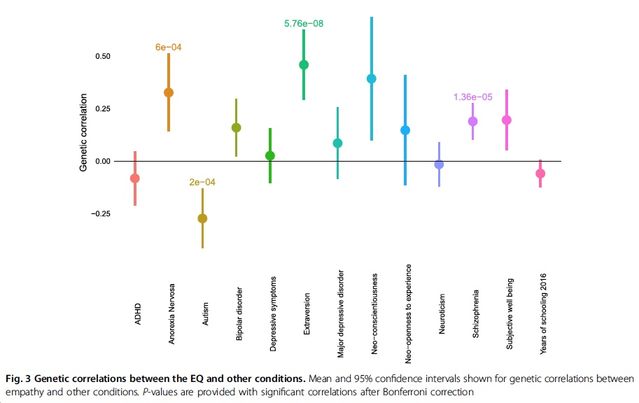
As predicted, based on earlier work, we confirmed a significant female advantage on the EQ (…). We identified similar SNP heritability and high genetic correlation between the sexes. Also, as predicted, we identified a significant negative genetic correlation between autism and the EQ (…). We also identified a significant positive genetic correlation between the EQ and risk for schizophrenia (…), risk for anorexia nervosa (…), and extraversion (…).
Indeed, in the figure above the autism plot is an almost exact mirror image of the schizophrenia one.
Nevertheless, even as we disagree regarding autism because of my superior knowledge and background regarding it, their work regarding the religious and atheist brains is equivalent from a neurological / pharmacological / neuroscientific perspective to the work being done regarding autistic and schizophrenic brains. You can see another essence of atheism in autism as follows:

blogs.scientificamerican.com
Bethany T. Heywood, a graduate student at Queens University Belfast, asked 27 people with Asperger’s syndrome, a mild type of autism that involves impaired social cognition, about significant events in their lives. Working with experimental psychologist Jesse M. Bering (author of the "Bering in Mind" blog and a frequent contributor to Scientific American MIND), she asked them to speculate about why these important events happened—for instance, why they had gone through an illness or why they met a significant other. As compared with 34 neurotypical people, those with Asperger’s syndrome were significantly less likely to invoke a teleological response—for example, saying the event was meant to unfold in a particular way or explaining that God had a hand in it. They were more likely to invoke a natural cause (such as blaming an illness on a virus they thought they were exposed to) or to give a descriptive response, explaining the event again in a different way.
In a second experiment, Heywood and Bering compared 27 people with Asperger’s with 34 neurotypical people who are atheists. The atheists, as expected, often invoked anti-teleological responses such as “there is no reason why; things just happen.” The people with Asperger’s were significantly less likely to offer such anti-teleological explanations than the atheists, indicating they were not engaged in teleological thinking at all. (The atheists, in contrast, revealed themselves to be reasoning teleologically, but then they rejected those thoughts.)
So, that shows in more religious neurotypicals answering the question with the first intuitive response (DMN output), in atheist neurotypicals answering after processing the intuitive response with maintained TPN activation (DMN output and then iterative bursts of TPN metacognitive passes), and in autistic people just using metacognitive bursts of the TPN on the input question itself without first having an intuitive output in response to it for indirect processing in the TPN in the same manner. So, the primary distinction between the atheist neurotypicals and the autistics here is that the atheists are having the input question cause an output from the DMN into the TPN that is then iteratively processed with meta-cognition in linear processing bursts, whereas the autistics are using that same iterative processing and meta-cognition in linear processing bursts, but on the direct input question itself without passing it through the DMN as an input for an intuition output to process, but rather processing it as the semantics of the input value itself. Increasingly religious neurotypicals use decreasingly many iterations of meta-cognitive processing in the TPN of the outputs of the DMN and in this manner become less like autistic people and atheists are, with the most extreme religious people being essentially traditional schizophrenics with religious delusions.
The researchers I disagree with regarding autism, I nevertheless greatly appreciate and respect their theism versus atheism research. I see it as just an extension of the autism versus schizophrenia literature, for I believe them with sufficient similarity that autism and atheism are closely aligned, ust as schizophrenia and theism are). They posit that atheists are most closely aligned with psychopaths: not autists. However, this requires assuming that autism is a condition of hyper-empathy, which, although has literature in support of it, is clearly not the scientifically tenable way to go, unless it be but a naive sense of a higher level of morality above the conventional where there is a presentation of moral behavior that is sincere even but arising from a superior logic and rationality, as opposed to the primitive tribal mannerisms of the neurotypical at the more lowly stage four level of moral development most often.
It's a primitive system with taboos and the like that are meaningless and magical. It's extraordinarily primitive.
The conflict between science and religion may have its origins in the structure of our brains. To believe in a supernatural god or universal spirit, people appear to suppress the brain network used for analytical thinking and engage the empathetic network. When thinking analytically about the...
www.sciencedaily.com
"When there's a question of faith, from the analytic point of view, it may seem absurd," said Tony Jack, who led the research. "But, from what we understand about the brain, the leap of faith to belief in the supernatural amounts to pushing aside the critical/analytical way of thinking to help us achieve greater social and emotional insight."

en.wikipedia.org
A recent theory by Jane Risen proposes that superstitions are intuitions that people acknowledge to be wrong, but acquiesce to rather than correct when they arise as the intuitive assessment of a situation. Her theory draws on dual-process models of reasoning. In this view, superstitions are the output of "System 1" reasoning that are not corrected even when caught by "System 2".[19]
Semantic Scholar extracted view of "fMRI reveals reciprocal inhibition between social and physical cognitive domains" by A. Jack et al.

pdfs.semanticscholar.org
System 1 has been variously characterized as 'intuitive', 'emotion-driven' and 'experiential'; whereas System 2 has been characterized as, 'controlled', 'rule-based', 'rational' and 'analytic'. We know of two lines of work which link cognitive neuroscience to this classical form of dual process theory:one which looks at logical reasoning (Goel and Dolan, 2003), the other moral judgments (Greene et al., 2004). Both identify areas in the DMN and TPN associated with System 1 and System 2 reasoning respectively. Hence, the link between dual-process theories of cognition and the DMN vs.TPN dichotomy appears worthy of further investigation.
An example of a culturally important superstition is the thiomersal-autism hypothesis of the anti-vaccination movement.
A new study published in the January 2008 issue of Archives of General Psychiatry found the prevalence of autism cases in California children continued to rise after most vaccine manufacturers started to remove the mercury-based preservative thimerosal in 1999, suggesting that the chemical was...
www.cnn.com
Years ago, people made predictions -- by removing thimerosal, the number of cases of autism should decrease -- therefore showing that thimerosal is a cause of autism. This new study puts that idea in jeopardy. Similar studies have been done in Canada and Denmark with the same results: thimerosal was removed, but autism is still on the rise. This is a strong message; it very clearly shows, and reassures, that autism did not arrive through a vaccine.
Anyway, back to the main point after that long aside.
So, to recap, intension is something like a verbal descriptor such as "apple: a red fruit that is commonly made into pie." So, it has an identifier and then descriptors that can be referenced to learn characteristics and such of things, and it can be coupled with such things. And integration is when such intension is correctly coupled with a piece of extension, such that you couple "apple" with an apple --- not with a cat. So, when you have a piece of intension incorrectly associated with a piece of extension, it's called a misintegration.
Homeopathy is a great example of misintegration. Whereas an integrated person will associate the intension "vial of water: A glass tube containing some H2O," a misintegrated person may associate the homeopathy intension to the same vial of water as "cancer medicine: A viable way to cure cancers." So, the person who is misintegrated has intension and extension associated, but incorrectly so. It's common for this throughout the "alternative healthy" community.

jhppl.dukejournals.org
Holistic Health Ontology
The holistic health ontology undergirding the most radical antivaccinationists is a profoundly oppositional view of what vaccines do in the body and what health is. I call it an ontology because it proposes a different account of reality from the mainstream medical story of health and disease. The holistic health ontology has an accompanying historical narrative about how vaccines do not work and have systematically caused widespread damage since their invention. Eleven of the forty-two speakers at the NVIC conference came out of this tradition (classified as alternative health practitioners and gurus), and many of those classified as activists (thirteen of forty-two) explicitly endorsed it as well. On this view, diseases of the past were actually defeated by sanitation, homeopathy, and nutrition, not vaccines. Attributing their vanquishing to vaccines is part of the orthodoxy of mainstream medicine.
It's socioculturally conditioned to a large extent. For example, the people misintegrated to, shall we say, false holy books are oftentimes so because of it being passed down from generation to generation and taught in such a way as that the intension ("the word of God", for example) and extension (the false holy book of whichever faith you disbelieve --- I will let you fill that one in inside of your head, so as to avoid distraction from the conversation at handm given the typically low prevalence of those with vocal commitment to the notion of omni-God-written religious scripture).
According to the Intuitive Belief Hypothesis, supernatural belief relies heavily on intuitive thinking—and decreases when analytic thinking is engaged. After pointing out various limitations in prior attempts to support this Intuitive Belief Hypothesis, we test it across three new studies using...

www.nature.com
According to the Intuitive Belief Hypothesis, supernatural belief relies heavily on intuitive thinking—and decreases when analytic thinking is engaged. After pointing out various limitations in prior attempts to support this Intuitive Belief Hypothesis, we test it across three new studies using a variety of paradigms, ranging from a pilgrimage field study to a neurostimulation experiment. In all three studies, we found no relationship between intuitive or analytical thinking and supernatural belief. We conclude that it is premature to explain belief in gods as ‘intuitive’, and that other factors, such as socio-cultural upbringing, are likely to play a greater role in the emergence and maintenance of supernatural belief than cognitive style.
By far the most common strategy used in the attempt to modify negative attitudes toward vaccination is to appeal to evidence-based reasoning. We argue, however, that focusing on science comprehension is inconsistent with one of the key facts of cognitive ...

www.ncbi.nlm.nih.gov
Increasing attention is being paid to individual differences in the willingness to thinking analytically about problems, which is counter-indicative of susceptibility to biases in judgement and decision making [40]. The Cognitive Reflection Test [41] (CRT), in particular, has been shown to have high predictive efficacy; predicting the ability to choose options with higher expected value and resistance to the logical fallacies described above [42,43]. Such measures fall within dual-process theories of human cognition, which distinguish between “intuitive” reasoning; which is fast, automatic and does not require working memory; and “analytical” reasoning, which is slow, deliberative, and requires working memory [44]. An analytical mode of reasoning, associated with more sound empirical and causal judgements, might be expected to yield a more favourable evaluation of vaccination in line with available evidence. However, no research has specifically considered individual differences in cognitive style and reasoning as factors predicting attitudes towards vaccination.
...
Previous research is highly suggestive regarding the impact of psychosocial factors that may determine formation of attitudes towards vaccination. The current study is based on the supposition that negative attitudes towards vaccination may be influenced primarily by cultural and psychosocial factors, rather than by evidence-based analytic reasoning. We aimed to test this idea, and gauge the relative impact of these factors through bivariate and multivariate associations in a cross-sectional design. Specifically, the present study aimed to assess the degree to which rejection of vaccination is associated with four cognitive and social factors:
Lowered willingness to consider the empirical evidence (indicated by an intuitive rather than analytical cognitive style)
...
A significant effect for analytic versus intuitive cognitive style was not found; suggesting that it is a cultural and personal orientation, rather than cognitive ability, that has a direct influence on vaccination attitudes.
Both of those preliminary studies need to be modified as they have a common methodological flaw that would fail to give a proper indication in some circumstances; however, that is a topic for another day.
So, a disintegration can be thought of as something like Zeus, where you have intension that describes a purported extension, but are unable to associate the two together because of the lack of true presence of the extension. People who reference disintegrations reify them,

en.wikipedia.org
Reification (also known as concretism, hypostatization, or the fallacy of misplaced concreteness) is a fallacy of ambiguity, when an abstraction (abstract belief or hypothetical construct) is treated as if it were a concrete real event or physical entity.[1][2] In other words, it is the error of treating something that is not concrete, such as an idea, as a concrete thing. A common case of reification is the confusion of a model with reality: "the map is not the territory".
A variant of this actually manifests in mimic versus model human sexual competition paradigms.

It's actually a form of parasitic mimicry similar to Batesian mimicry, but the false genetic fitness signaling participant aims to make it so the honest genetic signalling participant can't distinguish himself as having superior genes for passing onto the offspring, so that the male with the actually less sought after genes increases his chances of inadvertently being selected by the error of the female, which allows for somewhat increasing the most attractive females he can manage to fuck, up to his ability to successfully mimic males of a given attractiveness level. It's beneficial for the false signaling male because he becomes more competitive, but disadvantageous to other males in the area because of them having their ability to honestly signal that they are superior mate choices being reduced by his competitive measures against them, and also bad for females if they inadvertently select him over a superior male to have selected because of not being able to distinguish the honest from the false signal of genetic fitness.

onlinelibrary.wiley.com
Signals of mate quality or value can be conflict traits. Insofar as an assortative market process leads to high-quality individuals pairing with each other, leaving lower ranked individuals to pair accordingly, 50 the quality of mate that an individual can attain is based on his or her own quality. There are, therefore, great incentives to deceive potential mates over mate value. This incentive for deception leads to conflict because, when the deception is successful, the deceived partner is swindled out of an optimal match. That partner will have unwittingly settled for less than his or her own quality merits, and this will have costly fitness consequences.
So it is parasitic against the female (however, somewhat attenuated parasitism, as it is hard to imagine an evolutionary success that is not, ultimately, "deserved," but still presuming that --- in an evolutionary context --- intergender competition of males against females is possible as many intuitively think it to be. I myself am uncertain regarding the matter, but clearly intragender competition exists within the males and females. If you use false signals of genetic fitness you cause competitive pressure onto the people who honestly have the genetic correlates for them through a process that is similar to how counterfeiting the money of a nation devalues it, and also how using counterfeit money lets you devalue others by getting goods from them you otherwise couldn't afford, and also thereby competing with honest possessors of money for limited supplies of such goods.
interesting aside I learned searching for a different article, which I was trying to find again after having not bookmarked it.
Females often use the duration, variety or persistence of a male's display to choose a mate (e.g. red deer: McComb 1987; crickets: Hedrick 1986; frogs: Ryan 1988).
In any case, I can't find the article I wanted to, but I did find one I had regarding a case study of sexual competition with a mimic who failed to maintain her false signaling and was socially punished for cheating the signaling system.
Dear Carol, Before school each day, I would put just a little bit more tissue in my bra. Recently, some tissues came out, and now everyone knows I stuffed. The other day, a boy said, “I have a cold. Do you...

www.girlslife.com
"Dear Carol, I was caught stuffing my bra at school..."
Dear Carol,
Before school each day, I would put just a little bit more tissue in my bra. Recently, some tissues came out, and now everyone knows I stuffed. The other day, a boy said, “I have a cold. Do you have a Kleenex?” and some girls laughed.
—Embarrassed
In any case, I wanted to demonstrate that as far as intragender competition goes, it is pretty much a signal of some value to be able to do things like develop large breasts (however, tastes on breast size aren't universal at all, but it is oftentimes considered better for them to be toward the larger size if not excessively so) carries a certain signaling quality to it. And for someone who is an honest signaler, she takes no conscious measure to make it so that her signaling quality is greater than her genetic quality, so the two are more likely to correlate. Mimicry is a parasitic strategy in terms of intragender competition because someone uses anything from simple stuff like stuffing a bra to even sophisticated cutting edge cosmetic surgeries (however, aiming to reach the optimal benefit to cost ratio as the ultimate goal for competitive optimization), and essentially hides the actually real evolutionarily developmental work their competitor did and honestly signals, by mimicking it with some trick like stuffing bra to conceal your relatively small breasts and then additionally signaling your own personal best honest genetic development and trying to prevent mimics from being able to copy yours with cheap tricks (if it requires $100,000 to mimic with success it's probably pretty good, but if some new technique makes it so everyone can pass counterfeit variants of your honest sexual capital you are knocked down the ladder and others climb up by preventing you from signaling something of value.
So it makes it an arms race. Mimic vs model sexual competition is only one of numerous sexually competitive paradigms, with also mate poaching versus mate guarding, just as one other example. However, I specifically mentioned model versus mimic competition because of how similar it is to with disintegration in terms of verbal intension for example,
I mean, Zeus is intension sans extension, yet
is extension sans
hard for me to think of the answer between these two in this case though:
Note that disintegration can be seen as a special case of misintegration wherein one misintegrates intension to phenomenology as if it were intrinsically "external-izable," at the risk of creating a preposterous neologism in my state of modafinil and THC fueled sleep deprivation. Lol. And noopept. Perhaps I am getting loopy. ^_^.

Disintegrated intension is oftentimes formed when one reifies one's intuition's intensions prior to referencing external sources and processing things with metacognitive iterations. Intuitions without external information having been gained for decent periods of time, and without decent periods of time on metacognitive TPN linear computing, are oftentimes ultimately proven wrong, so if you reify them you end up highly disintegrated. High creativity is associated with schizophrenia as inventions essentially start out as intuition outputs. New inventions start out as disintegrations because they are pieces of intension, even if only in the verbal and visual memory of a human phenomenology, that hasn't any extension nor has it ever, and so as it is a schematic or the like it is intension. So, that is a creative process and why highly creative people and schizophrenia are related,
Creativity is defined as an idea or product that is both novel or original and useful or adaptive. Despite the value of creativity at the personal and societal level, the tendency for creative individuals to suffer from what we would now call mental illness has been noted for thousands of years...

www.ncbi.nlm.nih.gov
Creativity is defined as an idea or product that is both novel or original and useful or adaptive. Despite the value of creativity at the personal and societal level, the tendency for creative individuals to suffer from what we would now call mental illness has been noted for thousands of years. In the mid-twentieth century, empirical evidence for the connection between creativity and psychopathology began to emerge. In this paper author brings literature review of the studies done about connection between creativity and psychopathology, as well as connection on schizofrenia and creativity. Author also point out that creating can be therapeutic for those who are already suffering from mental illness, and that creative art therapies applied in clinical and psychiatric settings report positive health-related outcomes.
It's not surprising at all. Creativity is essentially being disintegrated and then integrating by fabricating from the schematic of the inventive creation output of your mind. So, creativity and disconnection from reality into disintegrated intension go hand in hand, but psychosis is also a disconnection from reality into disintegrated intension --- it's just that unlike in the case of the creative person making useful inventions, the psychotic person is working on making perpetual motion machines and pseudo-medicines. In this case it is sometimes evolutionarily advantageous as a false signalling mechanism essentially, even if it is subconscious. Such psychotic people end up being evolutionarily socially parasitic because they essentially present as creative inventors or the like but are really insane people who happen to mimic them successfully for periods of time. It's similar to a Batesian mimic parasitic strategy on the truly creative and inventive, because such creative people may want grants and the like but lose them to someone doing something of no value.
Thomas Szasz’ constructive theory of mental illnesses – that they are (often deceptive) social strategies – can be reframed as a testable scientific hypothesis using concepts from evolutionary biology. Most data on non-bizarre delusions support the hypothesis that delusions evolved to mitigate the dangerous consequences of social failure by serving to unconsciously deceive others into providing social benefits that otherwise would not be forthcoming. In ancestral environments, a delusional individual convinced others that he or she possessed valuable information or social contacts, faced dangerous external threats, or was ill, and was thus eligible to receive valuable benefits.

en.wikipedia.org
Orgone (/ˈɔːrɡoʊn/) is a pseudoscientific[1][2][3][4][5][6][7] spiritual concept variously described as an esoteric energy or hypothetical universal life force. Originally proposed in the 1930s by
Wilhelm Reich,
[8][9][10] and developed by Reich's student Charles Kelley after Reich's death in 1957, orgone was conceived as the
anti-entropic principle of the universe, a
creative substratum in all of nature comparable to
Mesmer's
animal magnetism (1779), to the
Odic force (1845) of
Carl Reichenbach and to
Henri Bergson's
élan vital (1907).
[11]

en.wikipedia.org
Reich lost his position at the New School in May 1941 after writing to its director,
Alvin Johnson, to say he had saved several lives in secret experiments with the accumulator. Johnson was aware of Reich's claims that he could cure cancer, and told him the New School was not an appropriate institution for the work. Reich was also evicted from Kessel Street after his neighbours complained about the animal experiments.
His supporters, including Walter Briehl, gave him $14,000 to buy a house, and he settled into 9906 69th Avenue.[125]
Paul Federn became
Reich's second analyst in 1922; he later said he had detected "incipient schizophrenia" and called Reich a psychopath. Similarly, Sandor Rado had Reich as an analyst and in 1931 and declared him schizophrenic "in the most serious way". Reich's daughter, Lore Reich Rubin, a
psychiatrist, believed that he had
bipolar and had been sexually abused as a child.
[177]
By far the most common strategy used in the attempt to modify negative attitudes toward vaccination is to appeal to evidence-based reasoning. We argue, however, that focusing on science comprehension is inconsistent with one of the key facts of cognitive ...

www.ncbi.nlm.nih.gov
complementary and alternative medicine (CAM).
Also included was the 3-item Cognitive Reflection Test (CRT) [41], that indexes participants’ tendency to override an initial intuitive response by applying analytic thinking skills. For example, the first item is: “If it takes 5 machines 5 minutes to make 5 widgets, how long would it take 100 machines to make 100 widgets?” The intuitive answer for this question is 100, whereas the correct answer is 5. The CRT may also be understood as measuring an individual’s inclination towards miserly information processing, and is the most popular instrument based on modern dual process theories of cognition; itself a major theme during the last 50 years of research in cognitive science [55]. The CRT has proven to be a potent predictor of performance on various rational thinking tasks [55] including, a tendency to choose high expected-value gambles, temporal discounting, maximising strategies on probabilistic prediction tasks, and non-superstitious thinking [40,56,57].
Higher CRT scores (indicating a more analytical thinking style) were negatively related to a preference for CAM over conventional medical treatment ρ = −.12, p < .0001, as well as the number of CAM treatments used in the last year ρ = −.08, p = .0047. Finally, analytical thinking style was negatively related to all forms of CAM, with this relationship significant in three cases; herbal remedies ρ = −.08, p = .0014, homeopathy, ρ = −.06, p = .0236, and prayer for the purpose of healing, ρ = −.15, p < .0001.
Last week, there was a rally in Washington, D.C. How many people actually attended the rally is uncertain. The organizers themselves claim that 8,500 people attended, while more objective esti
www.sciencebasedmedicine.org
Like Steve Novella, I have no doubt that Jenny McCarthy and Jim Carrey mean well, but I agree that it’s not enough to mean well. There’s a famous saying that the road to hell is paved with good intentions. My usually corollary to this saying is that good intentions coupled with misinformation and self-righteousness are the straightest and surest route to hell that I can think of, and among the best examples of this corollary are parents who have been misled by the pseudoscience of the cottage industry of autism quackery that depends on the belief that vaccines cause autism for its profitability.

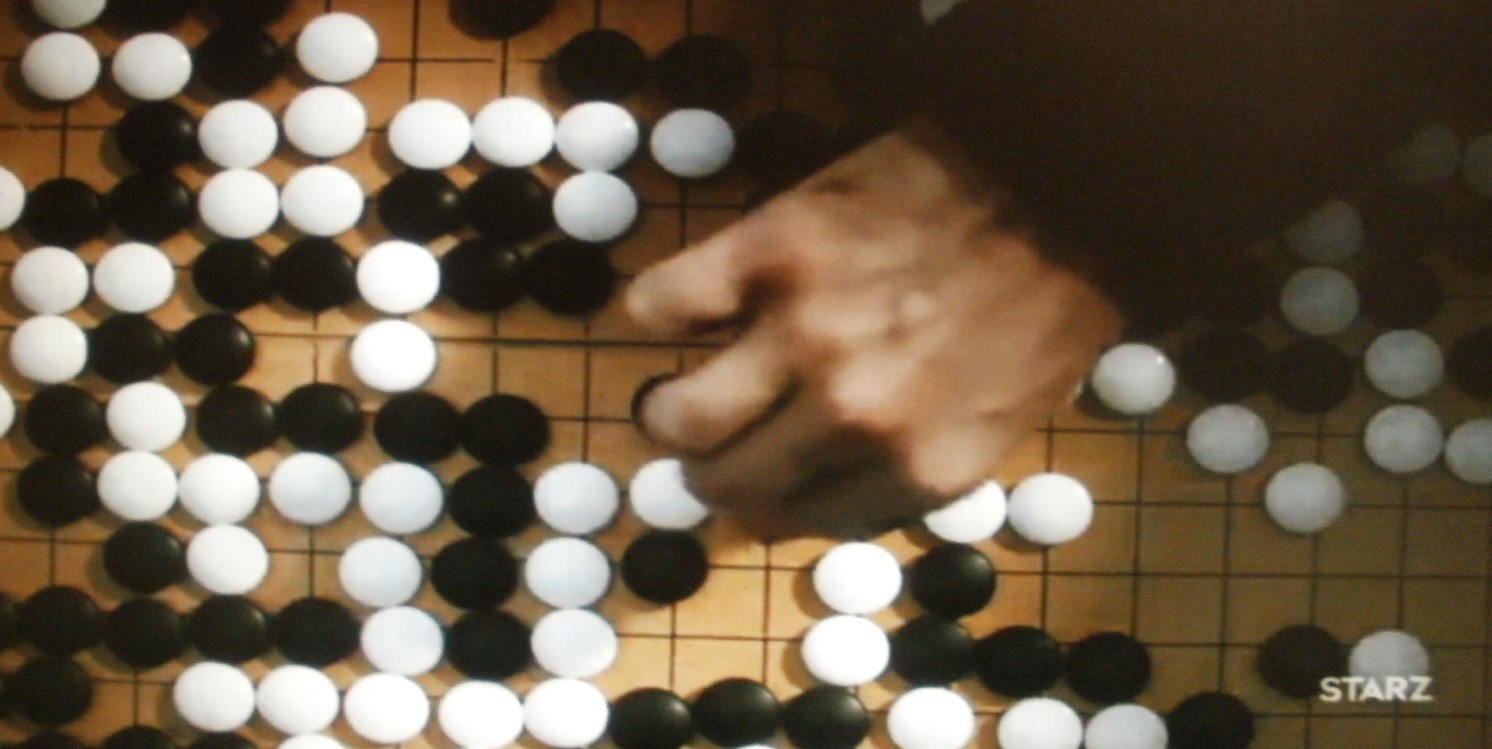

www.rand.org
en.wikipedia.org






womensenews.org

sd05.senate.ca.gov

www.alternet.org
en.wikipedia.org

www.theguardian.com

newspunch.com

www.dailyherald.com

fox8.com
www.counselheal.com

www.eastvalleytribune.com
onlinelibrary.wiley.com
www.springer.com
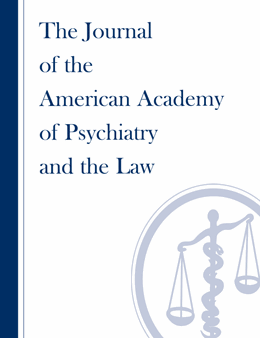
jaapl.org
en.wikipedia.org
